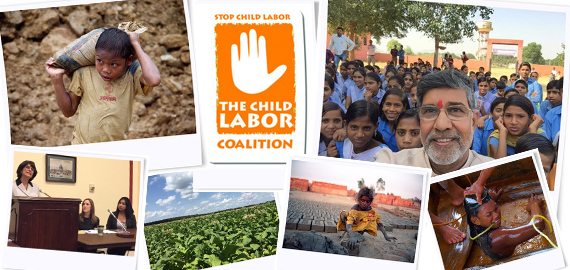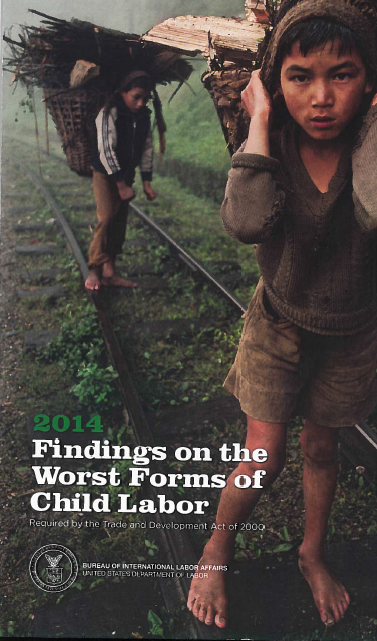 This post appeared on the Huffington Post on January 6, 2016
This post appeared on the Huffington Post on January 6, 2016
There were plenty of ups and downs in the fight against child labor this year. With an estimated 168 million children still trapped in exploitative labor, including 85 million doing hazardous work, we have an ambitious agenda ahead of us in 2016. Here are 10 highs and lows from 2015…1. The U.S. Department of Labor’s international child labor programs avoided the ax of conservative appropriators in the Congressional budget package released on December 17. During the battle, the child labor advocacy community argued that the International Labor Affairs Bureau (ILAB) plays a vital role in the fight against child labor, which has seen a reduction of nearly 80 million children over the last 15 years. ILAB documents the prevalence of child labor on a country-by-country basis, and then uses that information to fund about $60 million in remediation programs each year. In the end, appropriators shaved off $5 million but kept these valuable programs intact.
2. In June, India’s government provisionally approved a huge loophole in a 2012 ban on child work under the age of 14. Unfortunately, it allows children under that age to work in “family enterprises,” which will make child labor laws harder to enforce. Last year’s Nobel Peace Prize winner Kailash Satyarthi noted that millions of Indian children said to be working in family businesses are actually sold into bonded labor and other forms of slavery. A New York Times editorial weighed in on the proposed policy in June, and the advocacy community continued to fight against the proposal as the year drew to a close.
3. The battle against child labor in U.S. tobacco continued to gather strength in 2015. Altria Group, parent to three tobacco companies, implemented a new policy (announced in late 2014) that prohibits its growers from hiring children under 16. Implementing and monitoring such a policy presents challenges, and it’s difficult to gauge yet how well that policy is working, but it’s good to see a step forward and an acknowledgement that children and teens should not be harvesting this hazardous crop. The members of the Child Labor Coalition, which my organization coordinates, continue to press for a total ban on workers under 18. We organized a House and Senate briefing on child labor in tobacco this year. Legislation in the House, HR 1848, with 19 co-sponsors, and a companion bill in the Senate, S.974, with seven co-sponsors, would both ban child labor in tobacco. More than 40,000 individuals signed an AVAAZ.org petition asking President Obama and Secretary of Labor Perez to ban child labor in the crop.
4. Child Labor in hazardous gold mining received focused attention in 2015. In April, ILAB, the CLC, and Human Rights Watch (HRW) convened a stakeholder meeting to improve child labor interventions in small-scale gold mining communities. In May, a government report from Burkina Faso revealed that nearly 20,000 children were working in small-scale gold mines–part of an upsurge over the last few years. In June, HRW released Precious Metal, Cheap Labor: Child Labor and Corporate Responsibility in Ghana’s Artisanal Gold Mines, documenting the use of child labor in Ghana’s unlicensed mines and the use of highly toxic mercury by children. HRW asked refiners to take immediate steps to eliminate gold from their supply chains. In September, HRW released a report on child labor in small-scale gold mining in the Philippines, exploring the dangerous work of underwater compressor divers. PBS NewsHour won an Emmy for its coverage of this most-dangerous form of child labor.
5. In July, Tulane University researchers estimated that 2.12 million child laborers were still working in cocoa production in Côte d’Ivoire and Ghana during the 2014-2014 harvest. The study, commissioned by ILAB, found a 59 percent increase in the number of children in cocoa production since the last survey in 2008/2009–despite a decade-and-half-long multi-stakeholder initiative to reduce child labor in cocoa led by the West African countries and the major chocolate companies. Researchers found a 46 percent increase in hazardous work by children on the cocoa plantations.
6. News out of Panama in 2015 showed an almost 50 percent reduction in child labor over two years. The census by the Panamanian government reported a drop from 50,410 children in child labor (about seven percent of childhood population) to 26,710. Advocates express hope that the country could be largely child labor-free in the next few years.
7. In May, South Sudan ratified the Convention on the Rights of the Child, followed by Somalia in October, leaving the United States as the only UN Nation not to ratify the international child rights treaty. HRW’s Jo Becker shares her views on what it means for the United States to be in a “Club of One.”
8. In September, the Department of Labor’s ILAB launched the Sweat and Toil app, putting more than 1,000 pages of country-by-country research on child labor and forced labor in the palm of consumers’ hands. We’ve never had such easy access to supply chain info, nor been able to track individual countries’ progress in removing child labor and slavery. An android version of the app will be available shortly.
9. Mega retailer Target announced a partnership with CLC member GoodWeave to sell child-labor-free certified rugs. We rarely see major corporations making that type of commitment to join the fight against child labor, and we applaud this partnership, which will help reduce the number of children who are chained to the loom.
10. This year has seen progress in cleaning up South Asia’s notorious brick kilns. In February, officials helped free 333 bonded kiln workers, including 75 children, in Pudukuppam, India. Workers were paid $3 a week, if they were paid at all. There were a number of similar raids during the year. An ongoing program, “Better Brick Nepal,” conducted by CLC members Global Fairness Initiative and GoodWeave, is working to ensure that laborers who produce bricks are not exploited and that Nepal’s 60,000 child brick workers are protected.






















